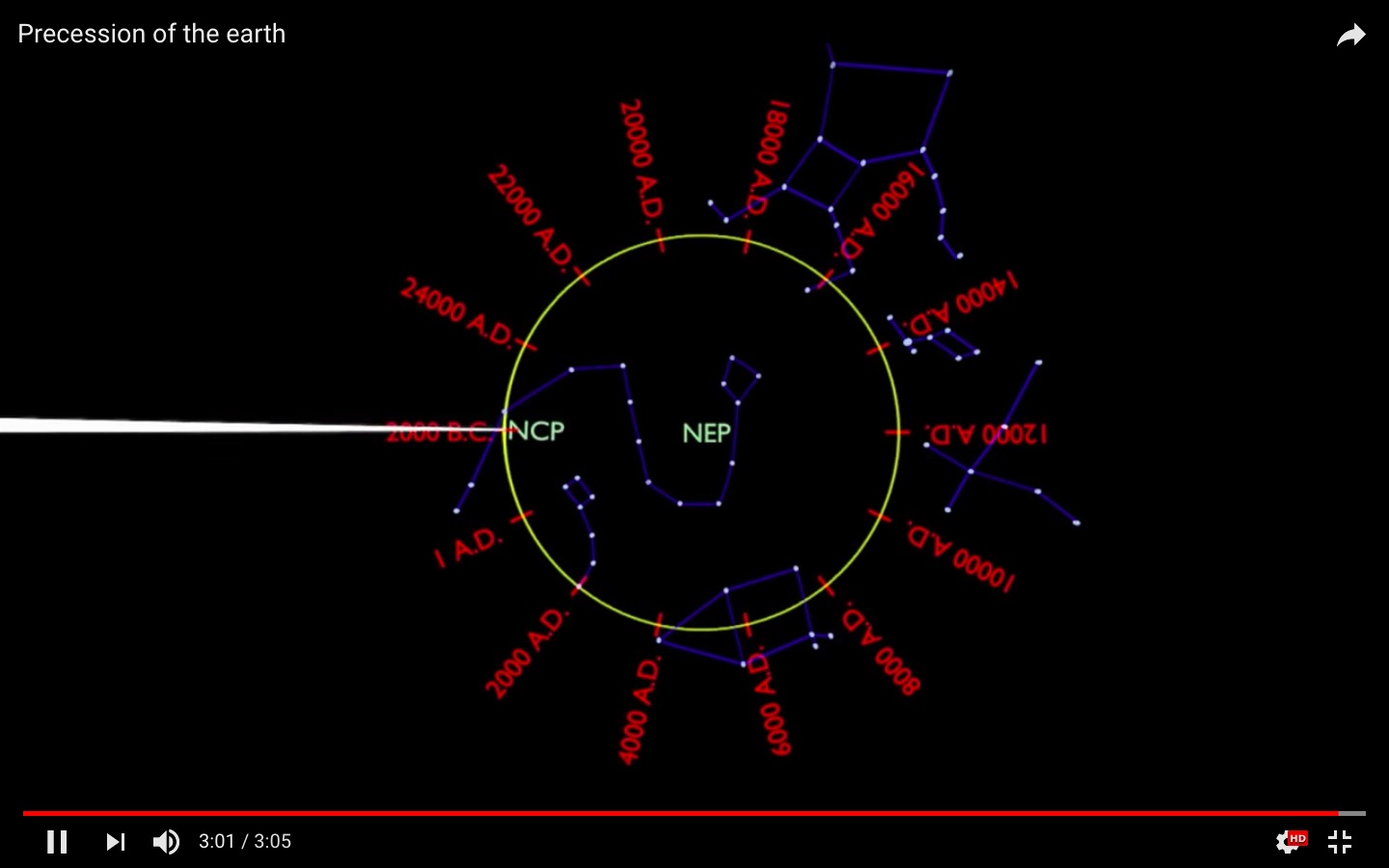The values
$$\alpha_0 = 0.00 - 0.641 T$$
$$\delta_0 = 90.00 - 0.557 T$$
provide a first-order estimate of the movement of the right ascension ($\alpha_0$) and declination ($\delta_0$) of the direction of the Earth's north pole for short periods of time after the epoch, expressed to three digits of precision only. $T$ represents the time after epoch expressed in units of Julian centuries (36525 days). The centuries unit was chosen to make the values of order unity, not because the values are meant to be used to extrapolate for centuries. You should be thinking of using this for a period of years, until the next update is published.
This is because the motion sets off in that direction, but will move in approximately a circle about the pole of the ecliptic, and in about 26,000 years return to roughly the same direction. Watch Steven Senders' snappy video.
This movie was created with Blender and is used in the Spitz Fulldome Curriculum for the SciDome planetariums around the world.
Precession is the wobble of the Earth which makes the poles shift position over ~26,000 years as well as the position of the Vernal and Autumnal equinoxes in the sky. This movie illustrates the movement.
Hopefully this movie gives a little more meaning to the Dawning of the Age of Aquarius.
https://www.spitzinc.com/
The Earth's axis precesses around the ecliptic pole due to gravitational interaction between the Earth's tilted equatorial bulge and (mostly) the Sun. There is also a faster and much smaller amplitude nutation.
below: Earth's Rotation, Precession and Nutation. From here

below: Screenshots from Steven Senders' video Precession of the earth.






